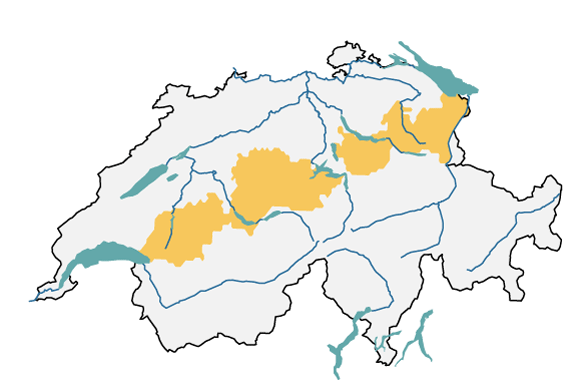The major region of the pre-Alps comprises the hilly and mountainous areas between the Swiss plateau and the northern side of the Alps, with the highest peaks at 2,500 m asl. This page provides insights into today’s climate in the pre-Alps, as well as detailed information about possible changes in the future.

Last modification 07.09.2023





